Tools

Spatula
Use a spatula to form the honkatajl base. The spatula is suitable for putting pasty urushi putty such as Ji.kiriko.sabi. The spatulas are mainly made of cypress.
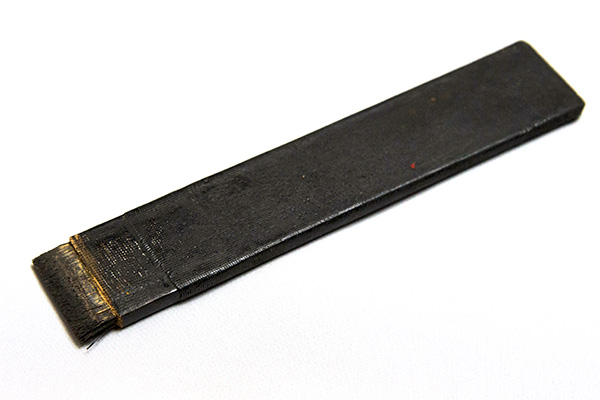
Urushi Hake (Brush for urushi lacquer)
The brush used only for urushi lacquering made of human hair.

Whetstone
Shave the base and undercoat.
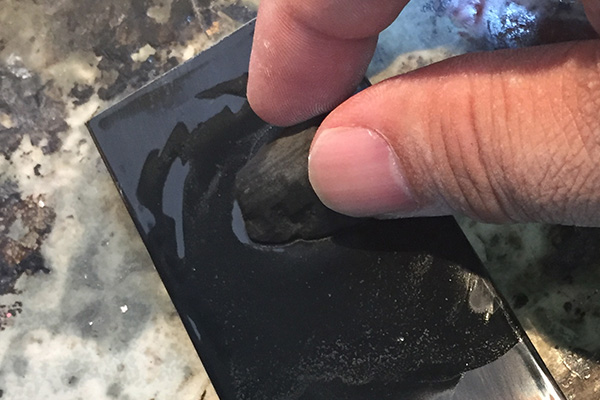
Suruga Sumi charcoal
This is a kind of charcoal. Used for precision polishing before topcoating and in the roiro mirror finish process.
Materials

Ki Urushi (Raw urushi lacquer)
Raw urushi lacquer that has not been processed as it is taken from the urushi tree. It is often used in the base process.
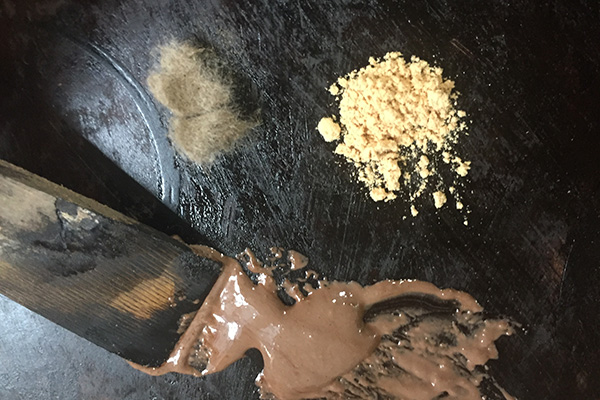
Kokuso (Urushi putty for wood repair)
Mix raw urushi lacquer + rice paste + zelkova powder + linen powder.
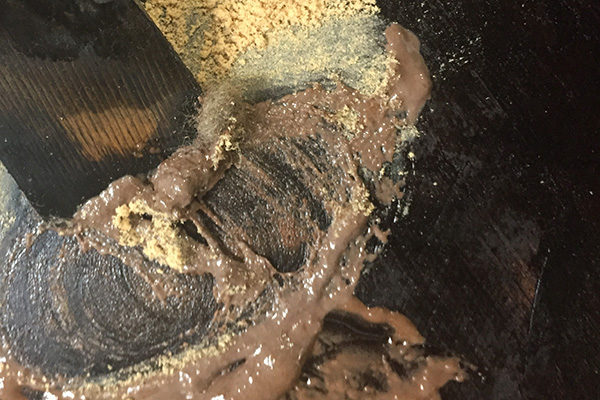
Kokuso (Urushi putty for wood repair)
Mixing

Kokuso (Urushi putty for wood repair)
Repairs scratches, dents, cracks, etc. on the wood before the base process. When it hardens, it becomes very hard.
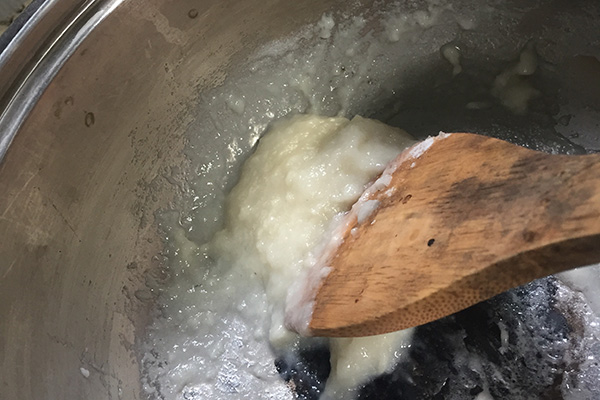
Nori Urushi (Rice glue urushi)
Heat rice flour and water to make rice glue.
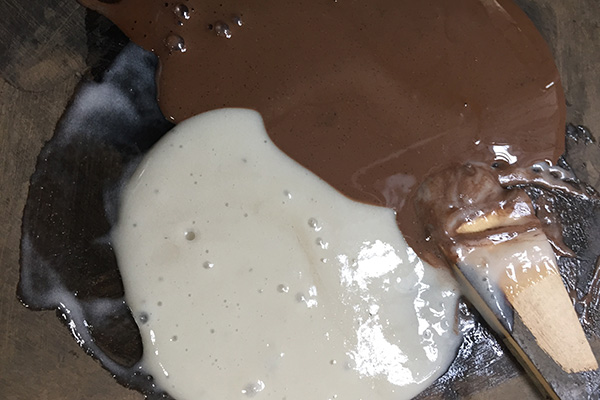
Nori Urushi (Rice glue urushi)
Mix rice glue and raw urushi lacquer.
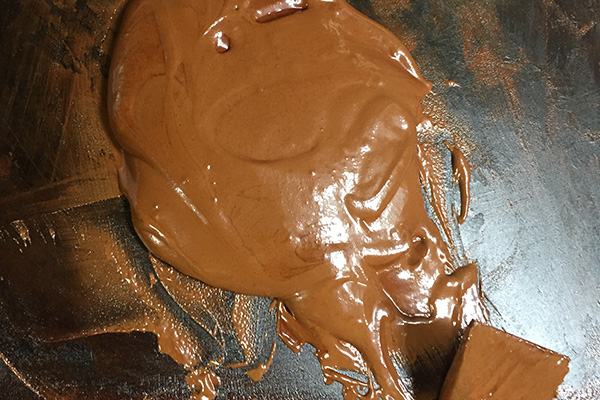
Nori Urushi (Rice glue urushi)
This is a mixed state. Use this rice glue urushi to apply hemp cloth and make Kokuso urushi putty.

Hemp Cloth
Apply lacquer and paste hemp cloth. This reinforces the wood and prevents cracking and deterioration.

Ji (Coarse urushi putty)
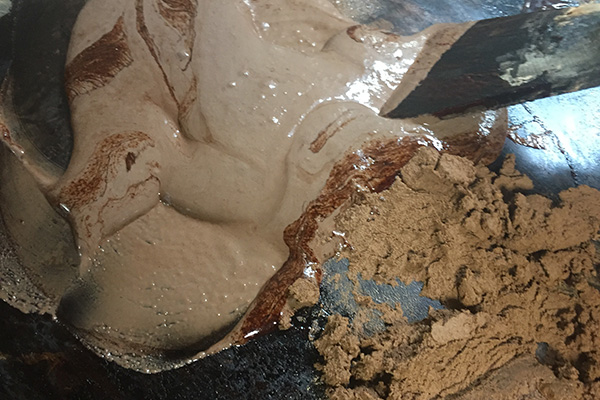
Ji (Coarse urushi putty)
Mix raw urushi and Jinoko (coarse red clay).

Ji (Coarse urushi putty)
This is a mixture. It becomes very hard when it dries. This can be thickened to some extent, so apply it to create a rough base shape.
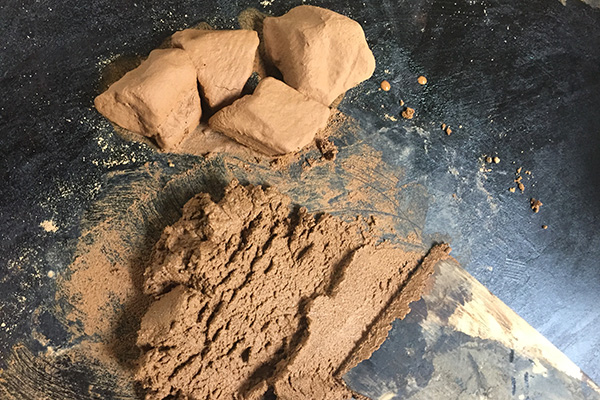
Tonoko (fine red clay) and Jinoko (coarse red clay)
They are kind of red clay and are often used in the base process. Jinoko has a coarse grain, and Tonoko has a fine grain. The roughness of the abrasive powder itself has stages, and the finer it is used in later processes.
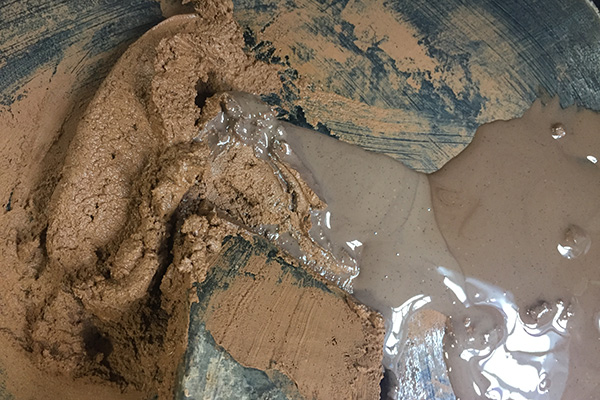
Kiriko (Medium roughness urushi putty)
Mix Tonoko (fine red clay), Jinoko (coarse red clay) and raw urushi.

Kiriko (Medium roughness urushi putty)
This is a mixture of them. It is used to fill the texture of hemp cloth attached to wood and to mold the base.
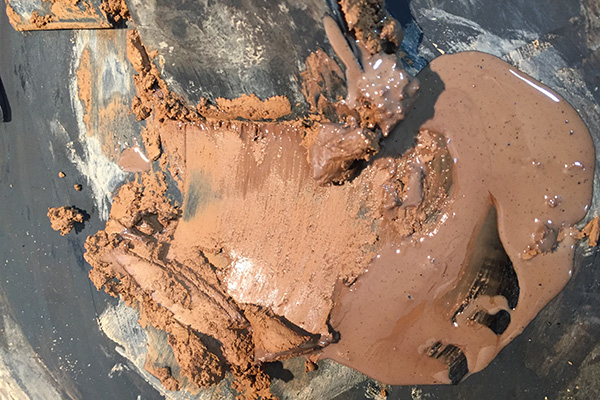
Sabi (Fine urushi putty)
Mix Tonoko (fine red clay) and raw urushi.

Sabi (Fine urushi putty)
This is a mixture. It is used at the final stage of the base. It is used to make and finish fine shapes precisely.

Black Urushi Lacquer
It is a lacquer that is colored black by reacting raw urushi with iron oxide. There are middle coat urushi lacquer, matte urushi lacquer, top coat urushi lacquer, roiro mirror finish urushi lacquer, etc., depending on the application.
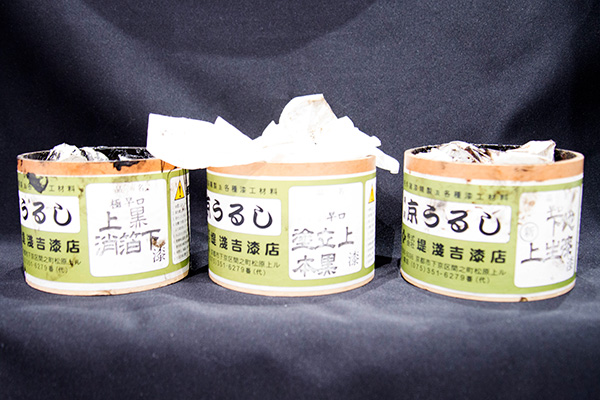
Black Urushi Lacquer
It is a lacquer that is colored black by reacting raw urushi with iron oxide. There are middle coat urushi lacquer, matte urushi lacquer, top coat urushi lacquer, roiro mirror finish urushi lacquer, etc., depending on the application.
About Japanese urushi lacquer and imported urushi lacquer
At our company, we can use imported urushi lacquer such as Chinese urushi lacquer as well as Japanese urushi lacquer, so customers can choose either one.
Japanese urushi lacquer and Chinese urushi lacquer are sap collected from exactly the same species of trees. Japanese urushi lacquer is expensive, but it spreads well when applied and the coating film is hard, so we can make the product a sharper finish. It is said that there is a shortage of distribution in Japan, but we can secure a stable and sufficient amount.
There are rumors that imported urushi lacquer, especially Chinese urushi lacquer, has a problem with durability these days, but most of the causes are due to the simplification of the process and lack of skill of craftsmen. So, there is no problem with the lacquer itself. Considering cost-effectiveness, it can be used sufficiently.
About applying gold leaf
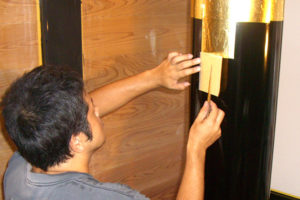 Place the gold leaf side by side on the dried urushi lacquer surface using the raw urushi for foil stamping as an adhesive. Gold leaf is roughly divided into two types, entsuki-haku and tachikiri-haku. entsuki-haku is a foil that is individually cut by hand and does not have an irregular luster, so it is suitable for use in products with large flat surfaces. tachikiri-haku is mainly used for sculpture. It is cheaper than entsuki-haku because it is machine-cut in thousands.
Place the gold leaf side by side on the dried urushi lacquer surface using the raw urushi for foil stamping as an adhesive. Gold leaf is roughly divided into two types, entsuki-haku and tachikiri-haku. entsuki-haku is a foil that is individually cut by hand and does not have an irregular luster, so it is suitable for use in products with large flat surfaces. tachikiri-haku is mainly used for sculpture. It is cheaper than entsuki-haku because it is machine-cut in thousands.
There are two main types of gold leaf dimensional standards: 4sun2bu (a square with a side of 12.6 cm) and 3sun6bu (a square with a side of 10.8 cm).
Gold leaf is mixed with silver and copper at the time of manufacture. This is to make it easier to use because gold alone is too flexible. From the highest purity, special 5 mou color, No. 1 color, No. 2 to No. 4 color, and so on. The commonly used No. 1 color has a gold content of 97.6%, and the No. 2 color has a gold content of 96.6%. 24 gold leaf with a purity of 99.99% can also be used. There is also a standard for the thickness of gold leaf. Gold leaf of various purity and thickness can be used if desired.
